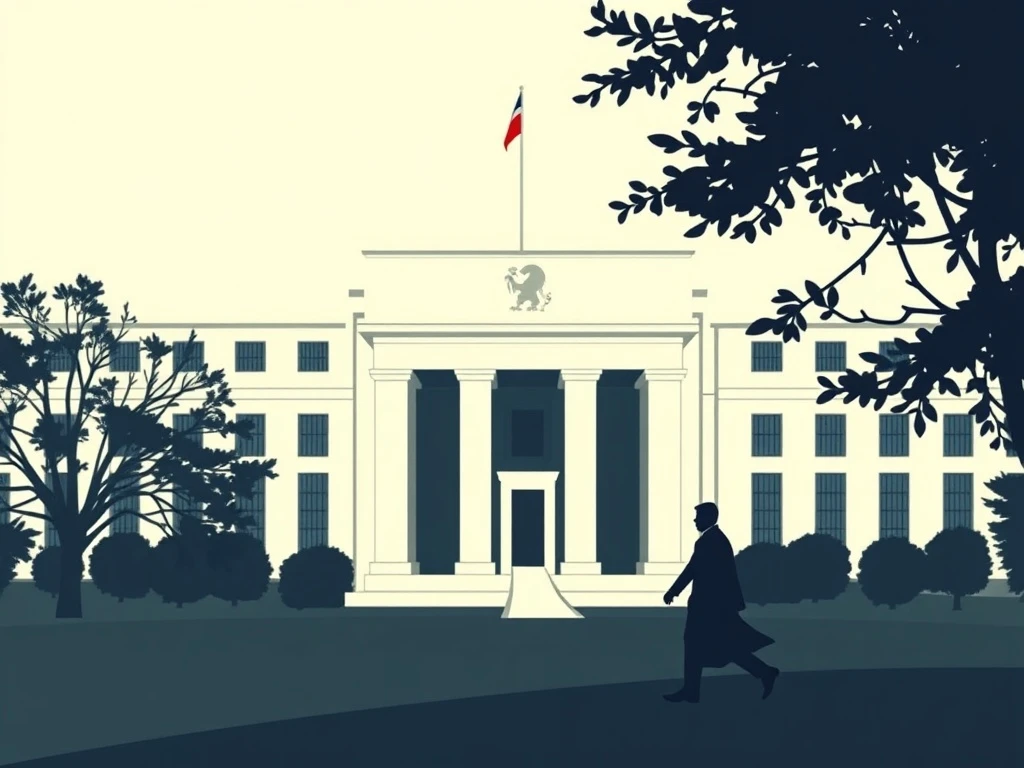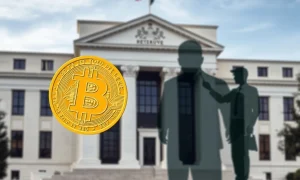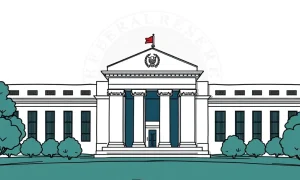Understanding the intricate dynamics of the Federal Reserve remains crucial for anyone tracking economic shifts. Now, a new development promises to add another layer of complexity. President Trump’s nominee, Miran, could surprisingly reshape the institution. His appointment might foster more open debate. This shift could lead to greater Fed dissent among officials. Such a change challenges the long-standing tradition of consensus at the central bank. It also offers a fresh perspective on how monetary policy decisions are made.
Understanding the Federal Reserve and Its Approach to Fed Dissent
The Federal Reserve, America’s central bank, plays a vital role. It manages monetary policy, maintains financial stability, and supervises banks. The Federal Open Market Committee (FOMC) makes key decisions. This committee includes the seven members of the Board of Governors and five Federal Reserve Bank presidents. Historically, the Fed has prioritized a unified voice. This approach aims to project stability and confidence to markets. However, the degree of Fed dissent varies. Dissenting votes occur, but they are often rare. They signal significant disagreement on policy direction. The current structure encourages thorough debate behind closed doors. Ultimately, members strive for a consensus outcome. This practice minimizes public division. It also prevents market uncertainty. Yet, some argue that more open disagreement could strengthen the institution. It might foster more robust decision-making. Moreover, it could enhance accountability.
The Board of Governors forms the core of the Fed’s leadership. These individuals serve 14-year terms. This long tenure provides independence from political pressures. The President appoints governors, and the Senate confirms them. Each governor brings a unique economic philosophy. They contribute to the diverse perspectives within the institution. The Chairman, appointed for a four-year term, leads the Board. The Chairman also serves as the public face of the Fed. This role involves communicating policy decisions. The FOMC meetings are critical. Here, members discuss economic data. They also debate future policy actions. The aim is to reach a broad agreement. However, individual members retain the right to dissent. They can vote against the majority. This action formally registers their disagreement. It provides a record of differing views. This mechanism is a key part of the Fed’s governance.
Miran’s Background and Potential Influence on Fed Dissent
While specific details about “Miran” are not fully public, the context suggests a nominee with a distinct viewpoint. Past nominations by President Trump often sought individuals challenging conventional economic thought. This pattern indicates a desire for new perspectives within the Fed. Miran’s professional history likely includes experience in finance or economics. His prior statements or writings would reveal his stance on monetary policy. For instance, some nominees advocate for stricter inflation control. Others might prioritize employment goals. Still others may favor a less interventionist approach. These differing philosophies can lead to vigorous internal debates. Therefore, Miran’s unique perspective could disrupt the established consensus. This disruption might manifest as increased Fed dissent. His presence could encourage other governors to voice their own nuanced positions more freely. This shift could alter the dynamics of FOMC meetings. It might also lead to more diverse policy discussions. Such an environment could challenge the status quo. It could push the Fed to consider a wider range of solutions for economic challenges.
A nominee’s past professional roles offer clues. For example, a background in a specific industry could inform their views on regulation. Experience in academia might highlight a theoretical approach. A history in private equity could suggest a market-oriented perspective. Miran’s specific expertise will undoubtedly influence his contributions. It will also shape his interactions with other governors. His appointment signals a deliberate choice. It reflects a desire to introduce a particular viewpoint into the Fed’s deliberations. This intentionality suggests a potential for significant impact. Consequently, observers are keenly watching for signs of his influence. They want to see how his presence affects the collective decision-making process. The degree of his impact on Fed dissent will become clear over time.
The Historical Context of Dissent Within the Federal Reserve
Dissent at the Federal Reserve is not unprecedented. Throughout its history, individual governors and bank presidents have cast dissenting votes. These instances often highlight significant policy crossroads. For example, during periods of high inflation or economic uncertainty, debates intensify. Some members might argue for aggressive rate hikes. Others might advocate for a more cautious approach. These disagreements reflect genuine differences in economic forecasting or policy preferences. Historically, strong chairmen have often worked to build consensus. They aim to present a united front. Yet, even under strong leadership, dissent emerges. For instance, during the 1970s, the Fed faced immense inflationary pressures. Different governors held varying views on how to tackle the crisis. These debates sometimes led to public disagreements. Such historical examples demonstrate the institution’s capacity for internal debate. They also show its resilience in the face of differing opinions. The record of Fed dissent provides valuable insights. It reveals the complex challenges faced by policymakers. It also shows the evolution of economic thought within the institution.
The reasons for dissent are varied. Sometimes, a member believes the majority’s policy will not achieve the Fed’s dual mandate goals. These goals are maximum employment and price stability. Other times, the disagreement stems from differing economic models. Members might interpret economic data differently. They might also hold contrasting views on the appropriate role of government intervention. Furthermore, regional Federal Reserve Bank presidents often bring unique perspectives. They represent specific economic conditions in their districts. This diversity can lead to different policy recommendations. The formal recording of dissenting votes ensures transparency. It also holds policymakers accountable for their positions. This practice reinforces the Fed’s intellectual rigor. It demonstrates that decisions are not made lightly. Instead, they result from robust discussion. This historical backdrop provides context. It helps us understand the potential future of Fed dissent under Miran.
How Miran Could Encourage More Open Fed Dissent
Miran’s presence could genuinely encourage more open Fed dissent. Several factors might contribute to this shift. First, his own willingness to challenge established norms could set a precedent. If he consistently voices his distinct views, it might empower others. Other governors might feel more comfortable expressing their own reservations. Second, his appointment might signal a broader shift in administrative priorities. A new administration might prefer a less monolithic Fed. They might favor an institution that reflects a wider range of economic philosophies. This preference could subtly encourage greater internal debate. Third, Miran’s specific arguments could be highly persuasive. He might present compelling cases for alternative policies. These arguments could sway other members. They might also inspire them to consider different options. Consequently, the dynamics of FOMC meetings could change. Discussions might become more spirited. Votes might show less unanimity. This evolution would mark a significant departure from recent trends. It would highlight a new era of open dialogue. This openness could lead to more nuanced policy outcomes. It could also make the Fed’s decision-making process more transparent.
Furthermore, a new governor can bring fresh analytical frameworks. They can introduce new data interpretations. These new approaches can challenge existing assumptions. This intellectual challenge can naturally foster more debate. It can also lead to more frequent dissenting votes. The very act of introducing a new voice can disrupt old patterns. It can force a re-evaluation of long-held positions. This process is healthy for any institution. It ensures that policies are rigorously tested. It prevents groupthink. Miran’s potential impact on Fed dissent is therefore multifaceted. It involves his personal approach, the broader political context, and his intellectual contributions. All these elements could combine to create a more dynamic internal environment. The outcome could be a Federal Reserve that is more openly engaged in internal debate.
Potential Benefits of Increased Fed Dissent
Increased Fed dissent offers several potential benefits. Firstly, it can lead to more robust policy decisions. When diverse viewpoints are thoroughly debated, weaknesses in arguments become apparent. This process can refine policies. It can also make them more resilient to unexpected economic shocks. Secondly, greater transparency can build public trust. When the public sees open debate, they understand the complexities involved. They recognize that decisions are not arbitrary. Instead, they result from careful consideration of multiple perspectives. This transparency can enhance the Fed’s credibility. Thirdly, it can improve accountability. Dissenting votes clearly attribute specific positions to individual policymakers. This clarity allows the public and markets to assess their reasoning. It fosters a higher degree of responsibility. Finally, it can encourage intellectual growth within the institution. A culture that embraces healthy disagreement promotes critical thinking. It encourages continuous learning. This environment can lead to more innovative solutions. It can also help the Fed adapt to evolving economic conditions. Therefore, while dissent might seem disruptive, its long-term benefits could be substantial. It could lead to a more effective and responsive central bank. This is a significant consideration for the future of monetary policy.
Consider the role of diverse perspectives in problem-solving. A single, unified view can sometimes overlook critical details. It might miss alternative solutions. However, when different angles are explored, a more comprehensive understanding emerges. This holistic view can lead to better outcomes. For instance, some economists argue that the Fed’s past consensus-driven approach sometimes led to delayed responses to economic shifts. More open debate might prevent such delays. It could enable quicker, more adaptive policy adjustments. Furthermore, an environment where dissenting views are respected can attract top talent. It can encourage a wider range of experts to join the institution. This intellectual diversity further strengthens the Fed’s analytical capabilities. Thus, promoting Fed dissent could ultimately make the central bank stronger. It could make it more capable of navigating complex economic landscapes. This outcome would benefit the entire economy.
Potential Challenges and Risks of Greater Fed Dissent
While benefits exist, greater Fed dissent also presents potential challenges. One primary concern is market uncertainty. Financial markets often prefer stability and predictability from central banks. Frequent dissenting votes could be interpreted as a sign of internal disarray. This perception might lead to increased market volatility. Investors might become unsure about future policy directions. This uncertainty could affect investment decisions. It could also impact borrowing costs. Another risk involves the weakening of the Fed’s unified voice. If the Fed appears divided, its policy signals might become less clear. This lack of clarity could confuse the public. It might also reduce the effectiveness of monetary policy actions. A strong, unified message is crucial for guiding economic expectations. Furthermore, excessive dissent could lead to paralysis. If consensus becomes too difficult to achieve, decision-making could slow down. This delay could be detrimental during fast-moving economic crises. It might prevent timely interventions. Therefore, striking the right balance is essential. Dissent should foster robust debate. However, it should not undermine the Fed’s ability to act decisively. The institution must maintain its credibility. It must also retain its effectiveness. Navigating these risks will be crucial. It will determine whether Miran’s impact is ultimately positive or negative. The management of increased Fed dissent will be a key challenge.
Moreover, the political implications cannot be ignored. A more openly divided Fed might become more susceptible to political pressure. External actors might try to exploit internal disagreements. They could attempt to influence policy outcomes. This external pressure could compromise the Fed’s independence. It could also undermine its non-partisan status. Maintaining independence is vital for the Fed’s long-term effectiveness. It ensures decisions are based on economic data, not political expediency. Another challenge lies in communication. The Fed already faces the complex task of explaining its policies to the public. More frequent dissenting statements could complicate this communication. It might make it harder for the public to understand the Fed’s overall stance. Therefore, any increase in Fed dissent must be carefully managed. Clear communication strategies will be necessary. These strategies must explain the reasons for disagreement. They must also reassure markets about the Fed’s fundamental stability. The institution must continue to project strength and purpose.
Impact on Monetary Policy and Investor Outlook from Fed Dissent
The potential for increased Fed dissent has significant implications for monetary policy. A more diverse range of opinions could lead to different policy outcomes. For instance, interest rate decisions might become less predictable. The timing or magnitude of rate changes could be subject to more intense debate. This could introduce greater variability into the Fed’s actions. It might also affect how quickly the Fed responds to inflation or unemployment. Furthermore, the approach to tools like quantitative easing or tightening could evolve. Some governors might advocate for aggressive balance sheet reduction. Others might prefer a more gradual approach. These differing views could lead to more nuanced, or even fractured, policy implementation. Investors, in turn, would need to adapt their strategies. They might face greater uncertainty regarding future monetary conditions. This uncertainty could lead to higher market volatility. It could also prompt a re-evaluation of asset valuations. Therefore, market participants will closely monitor Miran’s influence. They will also watch for any shifts in voting patterns. These indicators will provide clues about the future direction of monetary policy. Understanding these dynamics is crucial for making informed investment decisions. The impact on investor outlook will be a direct consequence of how Fed dissent plays out.
Moreover, a shift in internal dynamics could affect the Fed’s forward guidance. This guidance provides markets with clues about future policy. If there is less consensus, issuing clear forward guidance becomes harder. This difficulty could reduce the effectiveness of the Fed’s communication tools. It might force markets to rely more on their own interpretations of economic data. This situation could lead to increased speculation. It might also result in less stable market conditions. Conversely, some argue that more open debate could lead to more transparent guidance. If the reasons for policy choices are debated openly, the public might gain a deeper understanding. This understanding could ultimately strengthen the Fed’s ability to manage expectations. However, the initial phase of increased Fed dissent might involve a period of adjustment. During this time, markets could react cautiously. They might wait for clearer signals. Therefore, the transition period will be critical. It will determine the long-term impact on both monetary policy and investor confidence.
Looking Ahead: The Future of Fed Dissent Under Miran
The nomination of Miran signals a potential new chapter for the Federal Reserve. His influence could genuinely alter the institution’s internal dynamics. It could foster a greater degree of Fed dissent. This shift, while potentially challenging, also offers opportunities. It could lead to more robust policy debates. It might also enhance the Fed’s transparency and accountability. The balance between consensus and open disagreement will be crucial. It will determine the ultimate impact of this nomination. Observers will closely watch for changes in voting patterns. They will also analyze the tone of FOMC meeting minutes. These details will reveal the true extent of Miran’s influence. The evolution of Fed dissent under his tenure will shape future monetary policy. It will also impact how the central bank navigates complex economic challenges. Ultimately, a more openly debating Fed could be a stronger one. It could be better equipped to serve the nation’s economic interests. This outcome depends on how the institution manages its internal disagreements. It depends on whether it harnesses dissent constructively. The future of the Federal Reserve is indeed at a pivotal point. Miran’s role in this evolution will be significant. His impact on the culture of debate will be a key legacy.
Frequently Asked Questions (FAQs)
Q1: What is Fed dissent?
A1: Fed dissent occurs when a member of the Federal Open Market Committee (FOMC) votes against the majority on a policy decision. This action formally registers their disagreement with the chosen course of action. It highlights differing viewpoints within the central bank.
Q2: Why is Miran’s nomination expected to increase Fed dissent?
A2: Miran’s nomination is expected to increase Fed dissent due to his potential willingness to challenge established norms and the administration’s apparent preference for diverse viewpoints. His unique perspective could empower other governors to express their reservations more freely, altering FOMC meeting dynamics.
Q3: What are the potential benefits of more Fed dissent?
A3: Potential benefits include more robust policy decisions due to thorough debate, increased public trust through transparency, enhanced accountability for policymakers, and intellectual growth within the institution. It can lead to more refined and resilient policies.
Q4: What are the potential risks associated with increased Fed dissent?
A4: Risks include increased market uncertainty due to perceived internal disarray, a weakening of the Fed’s unified voice, and potential for slower decision-making during crises. It could also make the Fed more susceptible to external political pressures.
Q5: How might increased Fed dissent affect monetary policy?
A5: Increased Fed dissent could lead to less predictable interest rate decisions and changes in approaches to tools like quantitative easing. It might also complicate the Fed’s forward guidance, potentially leading to higher market volatility as investors seek clearer signals.
Q6: Has there been significant Fed dissent in the past?
A6: Yes, Fed dissent has occurred throughout history, particularly during periods of significant economic challenge or policy crossroads. These instances often highlight genuine differences in economic forecasting or policy preferences among members, contributing to the institution’s historical record of debate.
























